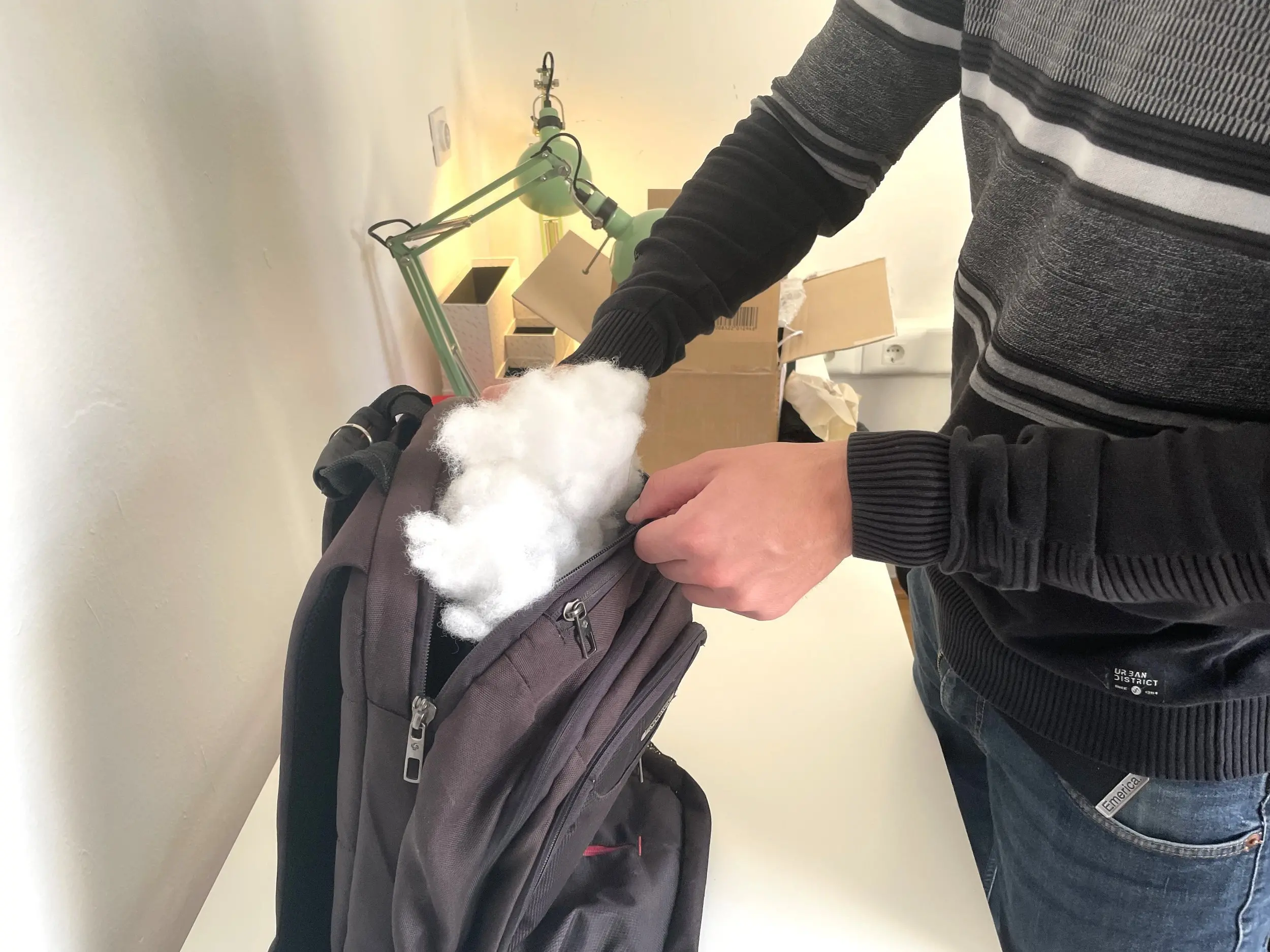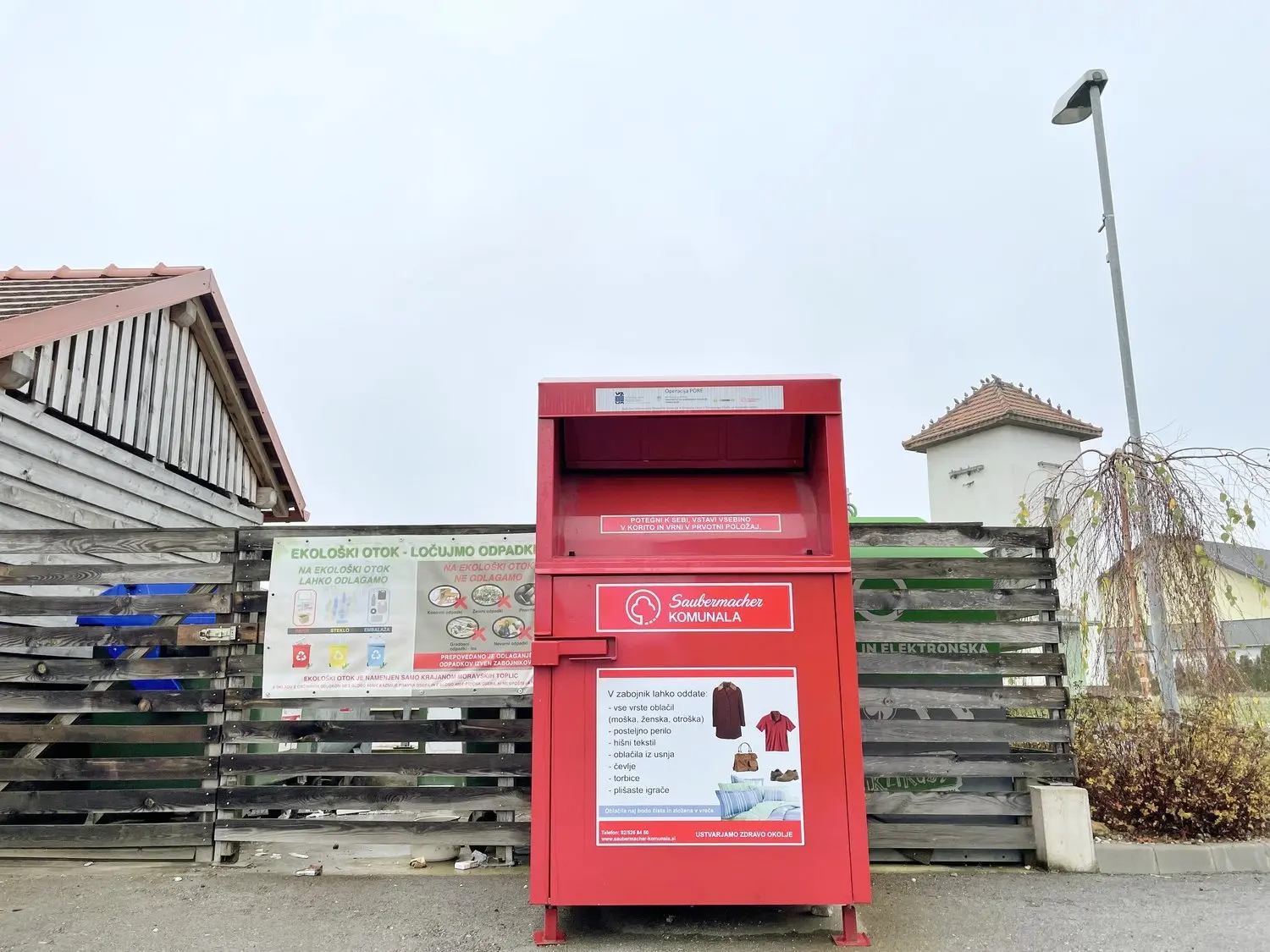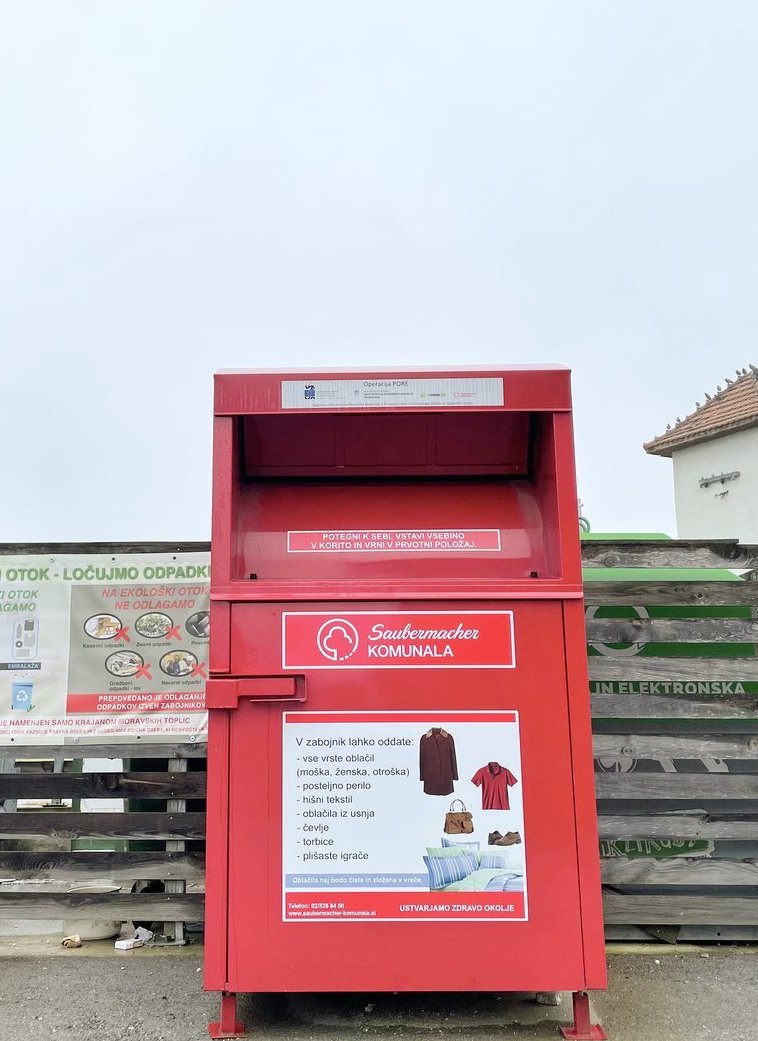
“The business models based on selling great quantities of clothing for short-term use are causing high raw material exhaustion and a lot of waste,” the European Commission warned in last year’s report on the circular economy in the textile sector.
On average, Europeans use more and more clothing, thus, between 2003 and 2018 its consumption has risen for about a quarter, from below 8 kilograms per person per year to almost 10. Studies have found that globally as much as 87% of all textile waste ended up in incineration facilities or in landfills.
Currently, EU member states are not yet obliged to report on the quantities or the manner of processing textile waste and data is only available for some of them, but due to different methodologies it is not comparable. However, under European legislation member states will have to ensure separate collection of textile waste from January 2025.

As a nonprofit journalism organization, we depend on your support to fund more than 170 reporting projects every year on critical global and local issues. Donate any amount today to become a Pulitzer Center Champion and receive exclusive benefits!
Oštro tested two local pilot projects boasting responsible unusable textile waste collection in Kamnik and Moravske Toplice. Journalists disposed of torn jeans and a broken backpack, equipped with tracking devices, in their containers. Additionally, a still usable coat purchased in a second-hand store and a pair of badly damaged sneakers were disposed of in collection centres in Novo mesto and Vrhnika.
Oštro was unable to verify without a doubt the final locations of the latter pair of waste but the jeans and the backpack travelled far. At the time of writing, the jeans were headed for one of the waste sorting centres abroad and the backpack’s tracker stopped emitting a signal in a Croatian port terminal.
From Pomurje via Hungary to Rijeka
The broken backpack, equipped with a tracking device, was thrown into a damaged textile waste container in Moravske Toplice, in northeastern Slovenia, in mid-November. Its path was at least 300 kilometers long and spanned three countries. Last week, just before Oštro lost track of it, it was sitting in the container terminal of the large port in Rijeka in the northern Adriatic.

The container in Moravske Toplice was part of PORE — Pozabljeni resursi (Forsaken Resources), a project implemented last year by the local action group LAS Goričko. In March they set up 13 containers for waste oil and just as many for textile waste in various towns in the Pomurje region. According to the group, one of the objectives of the project was to decrease the quantity of textiles in mixed communal waste.
Drago Dervarič, the General Manager of Saubermacher Komunala Murska Sobota that took part in the PORE project, told Oštro that they collected more than 32,900 kilograms of textiles (clothing, shoes, toys and bags) by the end of last year. Occasionally, they also found some mixed communal waste but “we do not open the bags containing clothing, they are opened later on by acquiring companies.” The items are not inspected but instead sold to a partner sorting facility in Hungary.
Just over a month later, the backpack’s tracker emitted from Zalaegerszeg in Hungary, approximately 50 km away from the border crossing with Slovenia, where the textile company West Hungary Textil is located.
West Hungary Textil did not answer Oštro’s questions. The company’s website states that the collected clothing items are sorted according to type, quality and wearing season, then repacked and sold.
The highest quality clothing is sold further in Hungary and its neighboring countries, while mostly summer clothing is sold to African and Middle East countries. And the “cheap clothing of still reliable quality” is sold to Asia, most often to Pakistan, explains the site.
The backpack then left Hungary, traveled through Zagreb in Croatia and was finally transported to the port of Rijeka. But a few days prior to the publication Oštro lost the backpack’s signal. Although the backpack was broken, it appears to have ended up among the textile waste intended for resale.
“We are not informed in detail of the further transports of the clothing. However, we do know that most of the items are reused,” the Saubermacher Komunala general manager told Oštro.
Jeans in Flagrante Delicto
Oštro disposed of the torn jeans into a discarded textile container in Kamnik at the beginning of July.
In Kamnik, the Publikus company, a local public utility service for communal waste collection, the pilot project for collection of damaged clothing and other textiles was introduced in two locations. It was implemented at the initiative of the Slovenian branch of the used clothing collection company Humana that also covered the cost of emptying the containers and sorting the collected waste.
“Separately collected unserviceable or torn discarded clothing and textiles can be refurbished, for example into industrial cloth, or used as an additive in producing fuel from waste,” Publikus’ expert PR consultant Gregor Kranjec explained to Oštro.
Kranjec said that their goal was separation of usable and unusable clothing items. “Our aim was to improve the quality of clothing deposited into ordinary Humana containers as it is intended for reuse. On the other hand, it is also a matter of eliminating waste from the mixed communal waste containers where unusable or torn clothing and textile waste are usually designated for.”
Saška Susman, the head of Slovenian Humana, had similar thoughts. She said that the project’s objective was to understand how separating serviceable and unserviceable textiles could work in Slovenia: “Namely, we have had very good solutions for managing still usable textiles for a while now, and we know what to do with them. Meanwhile, the solutions for unusable textiles are not yet as clear.”
Humana’s project was introduced last July and ended this January. The preliminary data shows that people could learn to properly dispose of textiles, given that the two test containers contained at least 30 to 40 percent of unserviceable textiles, Dejan Komparić, the organization’s expert advisor, told Oštro.
The containers’ contents were transported to Humana’s warehouse in Črnuče, a neighbourhood in Ljubljana, along with Oštro’s jeans equipped with a tracker.
At the end of the project Follow the Garbage, Oštro informed Humana about it and the jeans in their warehouse and asked for a meeting. The organization’s workers then searched through the bags of textiles they had collected in Kamnik and found the torn jeans with the tracking device.
“This is a pilot project without a financial construction,” said Komparić, sitting in a room with a larger desk surrounded by gray bags of textiles collected in Kamnik. The bags marked with a cross contained textile waste. “And one of those also used to contain your tracking device,” said Ms. Susman. The rest of the bags were filled with still usable textiles that people had thrown into the project’s containers.
When Oštro visited the warehouse the jeans had been emitting a signal from there for 5 months because the project ended on 15 January. The jeans were categorized as unusable and are currently waiting to be transported to one of Humana’s partner sorting units abroad. Unusable textile items are most often transferred to Slovakia, Bulgaria or North Africa.
The final destination of Oštro’s jeans thus remains a mystery.
Producers Lack Responsibility
Last year, Slovenes discarded 1327 tons of clothing and 261 tons of textile waste, the national Statistical Office data shows. The numbers only refer to textile waste that was collected separately, and does not include all the textiles dumped into the black container for mixed communal waste.
Partners of Obleka naredi človeka (You Are What You Wear), a project implemented by the fair trade institute 3MUHE and two environmental associations, Ecologists without Borders and Focus, last year estimated that in 2019 Slovenes discarded a little more than 25 thousand tons of clothing.
“The trouble with textile waste management is above all the fact that, as a secondary raw material, textile is not very valuable, so there is not a lot of interest for separate collection and recycling — on the global scale, currently less than one percent of it is recycled,” Jaka Kranjc from Ekologi brez meja (Ecologists without Borders) told Oštro. He believes that Slovenes already successfully separate well-preserved clothing for more or less charitable purposes, but they could certainly collect more.
In 2020, Slovenian Red Cross distributed 270 tons of clothing, followed by Karitas, an organization of the Catholic church, with 175 tons. As a rule, both organizations only allocate the clothing charitably and in the interest of the socially underprivileged in Slovenia.
Last year, Humana collected 2577 tons of clothing.
Kranjc said that “used clothing is usually transported to larger sorting centres across Europe, from where it is then transferred to second-hand clothing traders and to developing countries, depending on the quality, preservation and type of clothing.”
Oštro’s reporters wanted to know what happened to the torn and unusable textiles and if they can end up in less developed countries, but Kranjc said that they do not know. Clothing of high enough value remains in Europe “while it might be possible that others end up in less demanding markets.”
Saška Susman, head of Humana, stated for Oštro that a large portion of the best textiles are sent for reuse in the Northern Hemisphere, whereas the slightly damaged items are transported to Africa and other parts of the world where local economy is promoted by sorting and selling clothing.
She believes that with regard to unusable textile waste it would be sensible to introduce a system of producers’ extended responsibility where the producer or importer of such goods would have to contribute to waste management: “This would mean that the textile producers, such as H&M, Zara and other big players, would have to pay a fee like the one Coca-Cola has to pay for packaging.”
In Slovenia, the system of producers’ extended responsibility only includes packaging, electric and electronic equipment, tyres and candles. But France introduced it for the textile sector as early as in 2007. There, producers are obliged to ensure that at least half of the textile products they sell does not end up in landfills.
Kranjc from the association Ekologi brez meja also sees imposing the liability of the producers as a solution. “In such a system, the state can use contribution fees as a form of economic pressure and to promote a more circular economic design of products,” he pointed out. “At the same time, the state can thereby finance a quality system for separate collection of all textile waste, so that more would end up in refurbishing.”





